オーストラリア・ニュージーランドの鉄道を紹介します!
AUandNZ Railfan
Australia and New Zealand Railfan

シドニービンテージトラムミュージアム 2023
Sydney Vintage Tramway Festival 2023
今年はシドニーの象徴的なクロスベンチトラムが数多く運行されました。
これらの大容量の「toastracks」は、何十年にもわたってシドニーの道路交通のバックボーンでした。
世界中のほとんどの路面電車では、クロスベンチのデザインは時代遅れと見なされ、1930年代初頭までにほとんどが引退しましたが、 座席数の多さからシドニの輸送ニーズに適しており、1960年の撤退までクロスベンチのデザインが活躍していました。
1902年から1922年までのさまざまなクロスベンチトラムを紹介します。
The Sydney Vintage Tramway Festival 2023 was held on 26 February 2023 at the Sydney Tramway Museum.
This year saw a number of iconic Sydney cross-bench trams in operation.
These high-capacity 'toastracks' have been the backbone of Sydney's road transport for decades.
Although cross-bench designs were considered obsolete on most trams around the world, and most were retired by the early 1930s The high number of seats suited Sidney's transport needs, and the cross bench design remained in service until its withdrawal in 1960. Various cross-bench trams operated from 1902 to 1922.

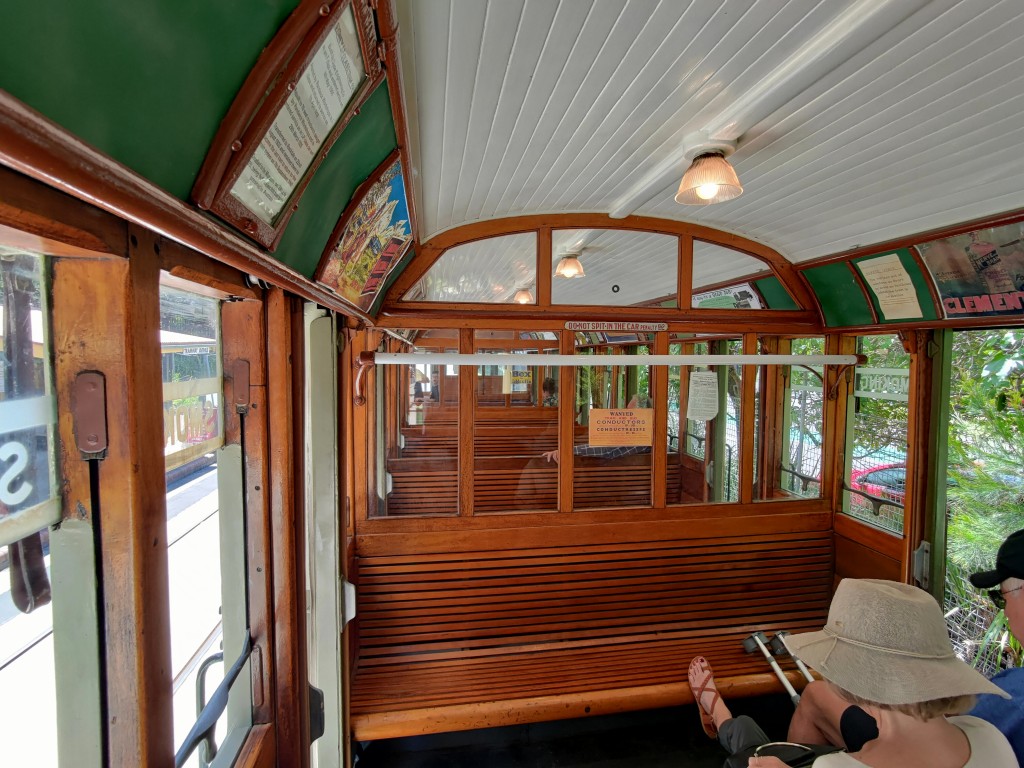
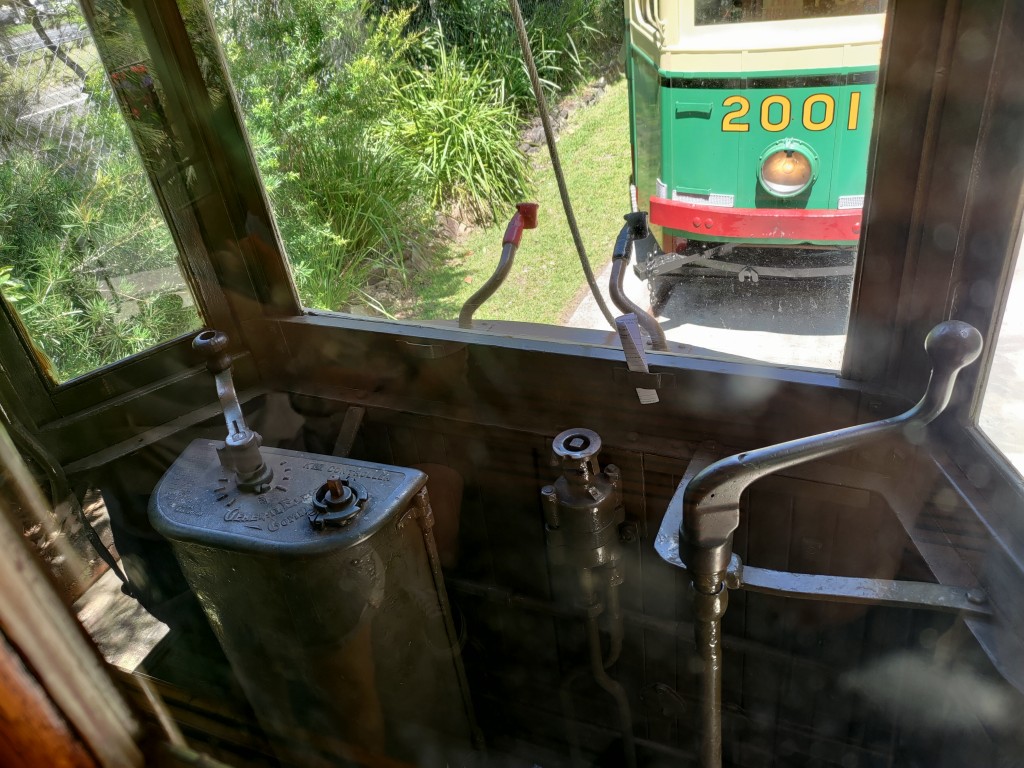
L/P154号は、1900年にクライドエンジニアリングによってFクラスとして製造されました
その後1926年に「L/P」タイプに改造されました。南半球で現存する最古の路面電車として知られています。イベント等の特別な時にのみ運行します。
運転席は客室と分離され、車内のコンパートメント2ブロック毎にガラスで仕切られています。
L/P 154 was built by Clyde Engineering in 1900 as an F-class
It was subsequently converted to the 'L/P' type in 1926. It is known as the oldest surviving tramcar in the Southern Hemisphere. Operational in occasional service.
The interior of the car is divided by glass every two blocks of compartments.


N728号はMeadowbank Manufacturing Companyで1909年に製造されました。特別な時にのみ運行し、通常は下の画像の様に屋内ホールで展示されています。
運転室にも客室と同じベンチがあり、運転士の背後のベンチにも着席できるのが特徴です。(但し現役時も一般に解放していたか不明)
No. N728 was built at Meadowbank Manufacturing Company in 1909. It operates only on special occasions and is usually displayed in an indoor hall, as shown in the image below.
The cab is separated from the passenger compartment by glass every two blocks of compartments in the car.

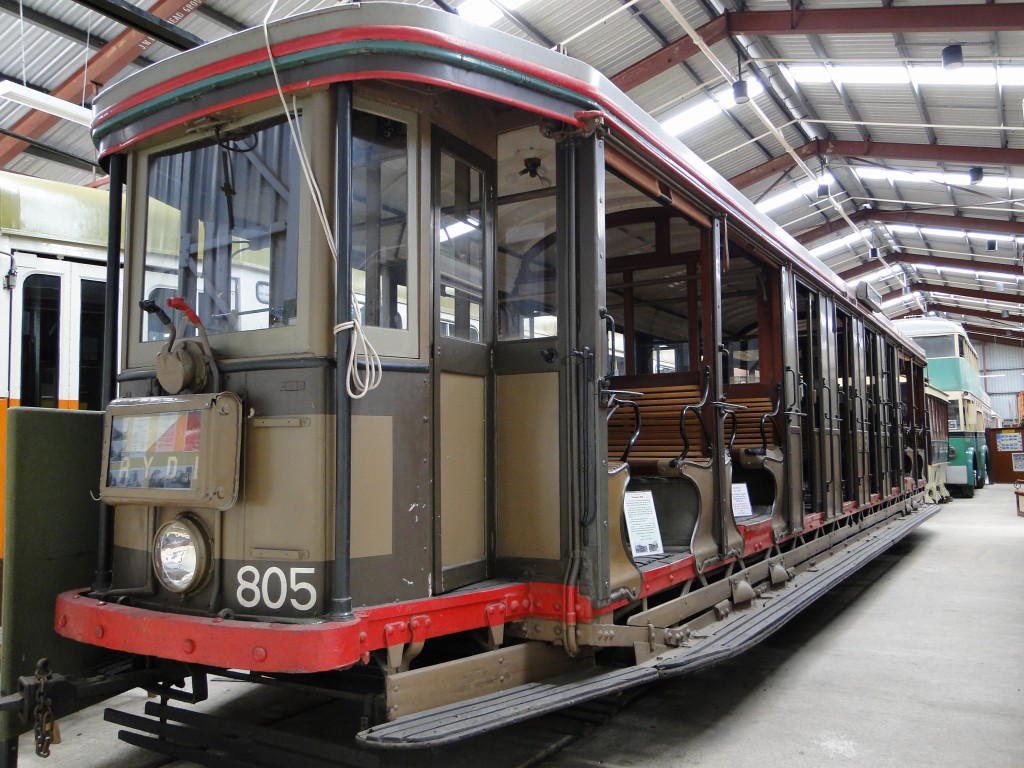
O805号は1909年にMeadowbank Manufacturing Companyで製造されました。
Oクラスは、スライドドアによるコンパートメントと、ドアの無いオープンコンパートメントが組み合わされています。
中央にはスライドドアを介して車内にアクセスできる4つコンパートメントがあり、クロスベンチの木製シートが取り付けられています。
これらの両側には 2つのオープンコンパートメントがあり、それぞれに金属製のアームレストが付いた 2つの向かい合ったクロスベンチ シートが取り付けられています。
これらの 2 つのセクションには、雨や風から乗客を保護するためのプルダウンキャンバスブラインドがあります。
Oクラスのトラムのすべての座席がクロスベンチであるため、ベンチの座席間の等間隔の垂直方向の分割パターンを参照して「toastrack」トラムの愛称が付けられました。
トラムの外側の周りには、車掌がすべての天候で料金を徴収するために歩く木製の車掌用フットボードがあります。
特別な時にのみ運行し、通常は下の画像の様に屋内ホールで展示されています。
The O805 was built at Meadowbank Manufacturing Company in 1909.
The O-Class combines a compartment with sliding doors and an open compartment without doors.
In the centre there are four compartments with access to the interior via sliding doors, fitted with cross-bench wooden seats.
On either side of these are two open compartments, each fitted with two facing cross bench seats with metal armrests.
These two sections have pull-down canvas blinds to protect passengers from rain and wind.
All seating on O-class trams is cross-bench, hence the nickname 'toastrack' trams, referring to the pattern of evenly spaced vertical divisions between the seats on the benches.
Around the outside of the tram are wooden conductor footboards on which the conductor walks to collect fares in all weather conditions.
It operates only on special occasions and is usually displayed in an indoor hall, as shown in the image below.

Oクラス1111号は1912年にMeadowbank Manufacturing Companyで製造されたクロスベンチトラムです。
車両中心付近は両開き式のドアが設置されているのが特徴です。
なおOクラスはアメリカのオレゴン州にある鉄道博物館でも動態保存されています。
O1111 is a cross-bench tram built at Meadowbank Manufacturing Company in 1912.
It features double swinging doors near the centre of the carriage.
The O-Class is also dynamically preserved at the Railway Museum in Oregon, USA.

O1111号は車両中央の4つのコンパートメントに両開きの扉が設置されています。
クロスベンチトラム自体が日本では見られませんが、両開きの扉がずらりと並ぶスタイルは非常に興味深いです。
車掌が車両下部のフットボードを伝って検札するのは大変なことだったと思われます。
車両前面の他に車体側面中央上部に方向幕も設置されています。
The O1111 has double doors in the four compartments in the centre of the carriage.
Cross-bench trams themselves are not seen in Japan, but the style of the double doors lined up in a row is very interesting.
It would have been difficult for the conductor to inspect the tickets through the footboard at the bottom of the vehicle.
In addition to the front of the vehicle, a destination roll is also installed at the top centre of the side of the vehicle.
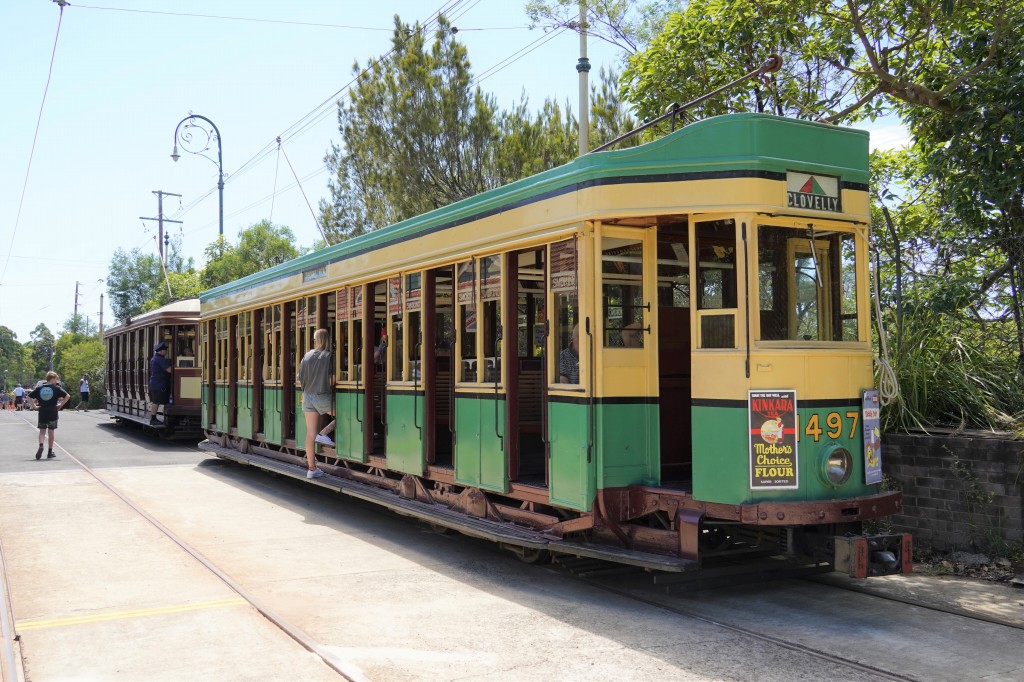
Pクラス1497号はニューサウスウェールズ州運輸局によって1922年に製造されました。
コンパートメントは全て開放型で、プルダウンキャンバスブラインドで仕切ることができます。
同じ構造のコンパートメントが並ぶため、統一感のあるデザインとなっています。
P Class 1497 was built in 1922 by the New South Wales Department of Transport.
All compartments are open and can be partitioned by pull-down canvas blinds.
The compartments are lined with the same structure, giving a uniform design.

R1クラス2001号は1951年にCommonwealth Engineeringによって製造されました。
ライトレール以前のシドニー路面電車において、最後に設計された車両でした。
この頃には乗り心地や安全性を重視し、クロスベンチスタイルは採用されなくなりました。
この車両の登場から10年後にシドニーの路面電車は全線が廃止となりました。
R1クラスはシドニーのトラムを代表とする車両のため、博物館の開館日は運用に入っていることが殆どです。
The R1 Class 2001 was built by Commonwealth Engineering in 1951.
It was the last vehicle designed for Sydney trams before light rail.
By this time, the cross-bench style was no longer used due to the emphasis on comfort and safety.
Ten years after the introduction of this vehicle, the entire Sydney tram network was decommissioned.
The R1 class is the most representative of the Sydney tram fleet and is usually in operation on museum opening days.

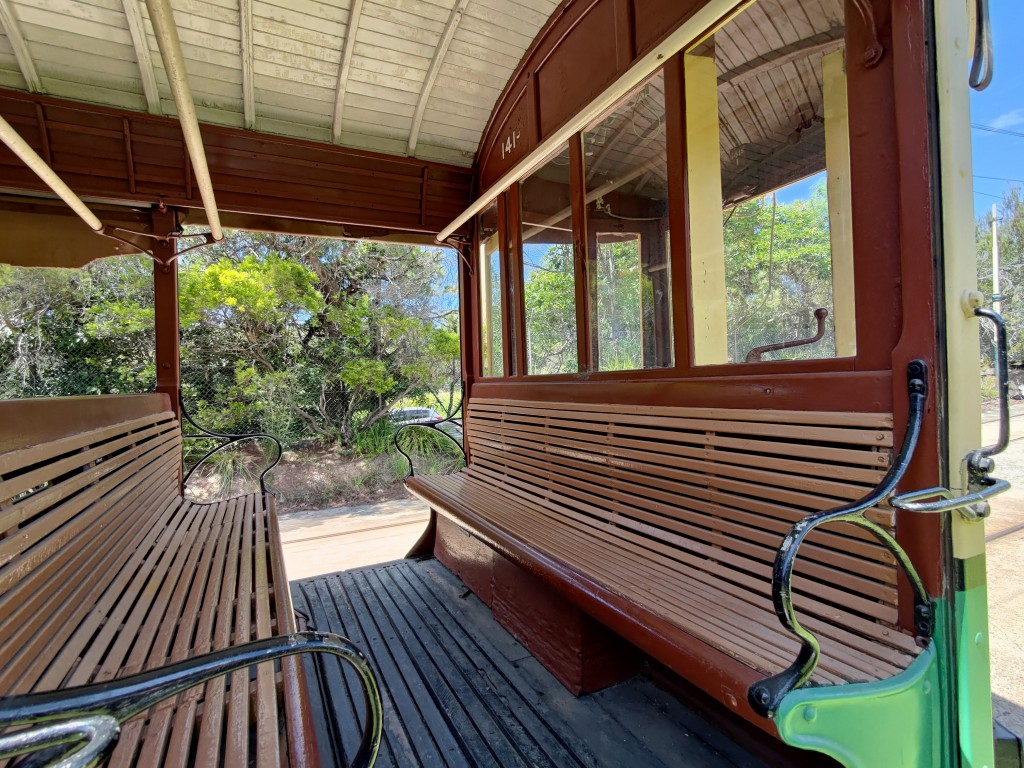
141S号は1911年にOクラス1030号としてMeadowbank Manufacturing Companyで製造されました。1955年に事業用車両に改造されました。
この日のイベントでも事業用車両のため一般客が乗車することはできません。
No. 141S was built at Meadowbank Manufacturing Company in 1911 as O-Class 1030; it was converted to a work car in 1955.
It is a work car and therefore not available to the public on this day's event.
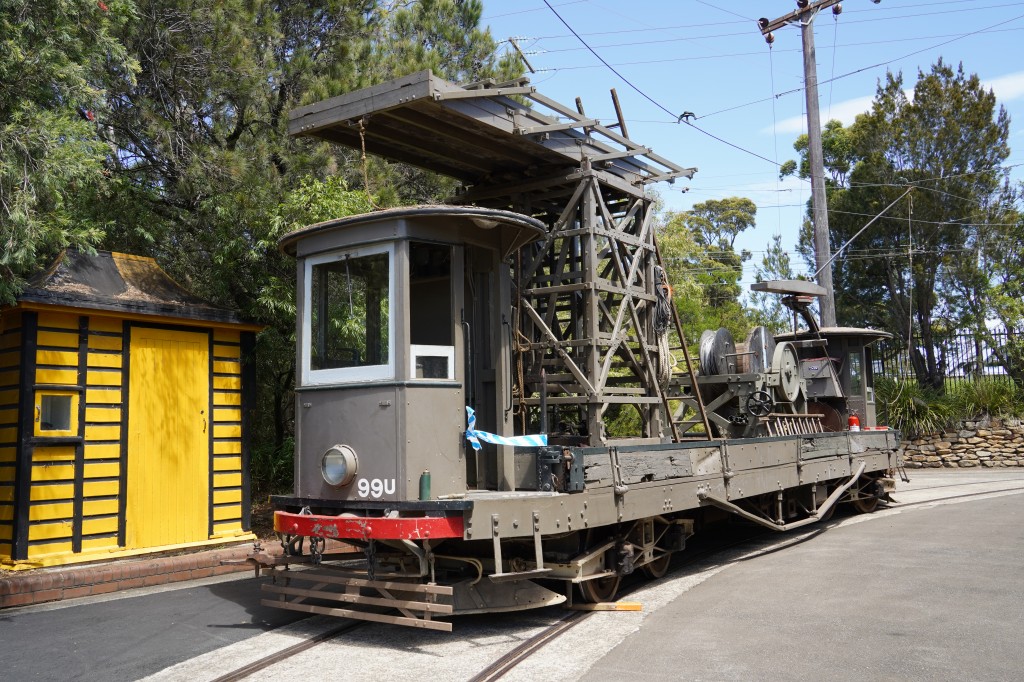
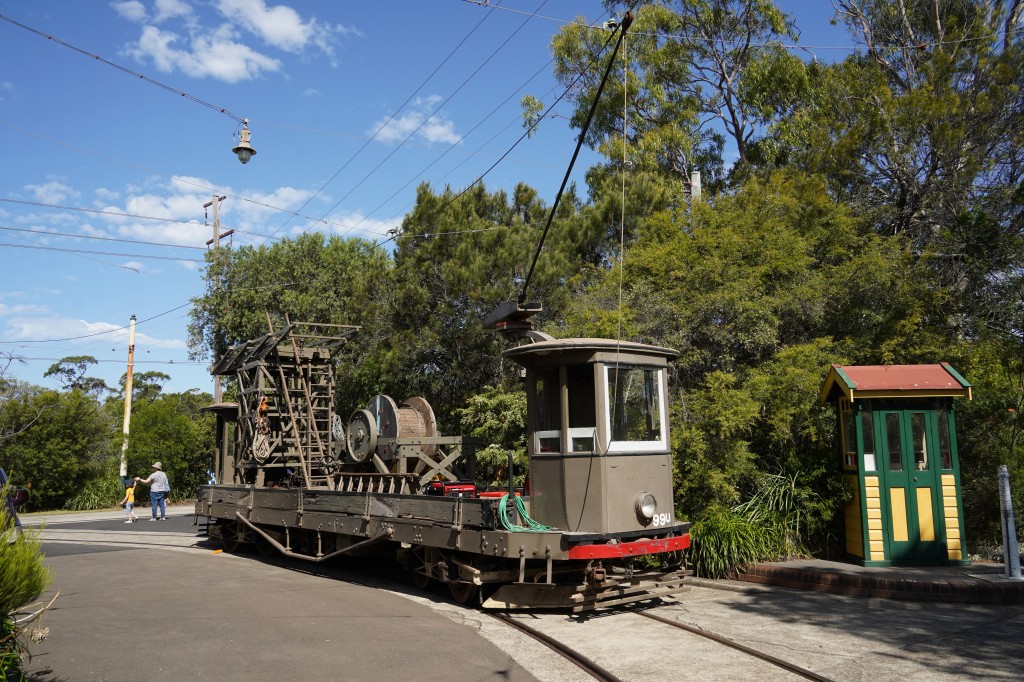
99Uは架線作業車両として1913年にMeadowbank Manufacturing Companyで製造されました。
現在もワークカーとして活躍しています。
なかなか味のある事業用車両ですね。
The 99U was built in 1913 in Meadowbank Manufacturing Company as an overhead line work car.
It is still in service as a work car today.
It is quite an interesting vehicle!


レールグラインダーNo.3(旧No.2)は1927年にイギリスのバースにあるS.&E.Co.によって製造されました。
1935年よりニューカッスルで活躍し、1950年の路線廃止の際にシドニーに戻りました。
1958年にメルボルンに売却され、その際にNo.3に改番されました。
メルボルン時代のスタイルを維持しており、通常は屋内展示のため運行しません。
99U号とは違い、ワークカーとしてレールを削ることはしていないようです。
前後でまったく顔が異なるユニークなスタイルです。
Rail grinder No. 3 (formerly No. 2) was manufactured in 1927 by S. & E. Co. in Bath, England.
It was in service in Newcastle from 1935 and returned to Sydney when the line was discontinued in 1950.
Sold to Melbourne in 1958, at which time it was renumbered No. 3.
It retains the style of its Melbourne days and does not normally operate for indoor display.
Unlike No. 99U, it does not appear to have had its rails scraped as a work car.
It has a unique style with a completely different face at the front and rear.
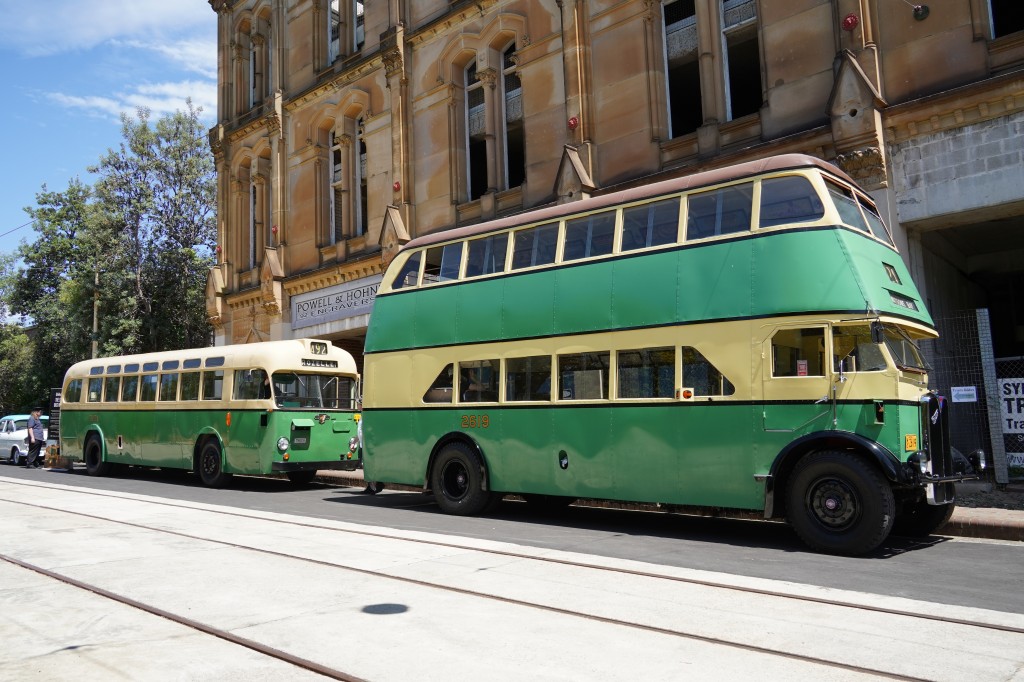
シドニーバスミュージアムより、2台のビンテージバスが展示されていました。
ダブルデッカーのビンテージバスはシドニーバスミュージアムの開館日やシドニートランスポートエキスポで乗車体験をするとこができます。
なおシドニーバスミュージアムは特定の日曜日のみ開館のため、事前に計画を立てる必要があるため日本からの訪問難易度が少し高めです。
Two vintage buses from the Sydney Bus Museum were on display.
The double-decker vintage buses can be experienced on Sydney Bus Museum opening days and at the Sydney Transport Expo.
Note that the Sydney Bus Museum is only open on selected Sundays, making it a little more difficult to visit from Japan as you need to plan in advance.
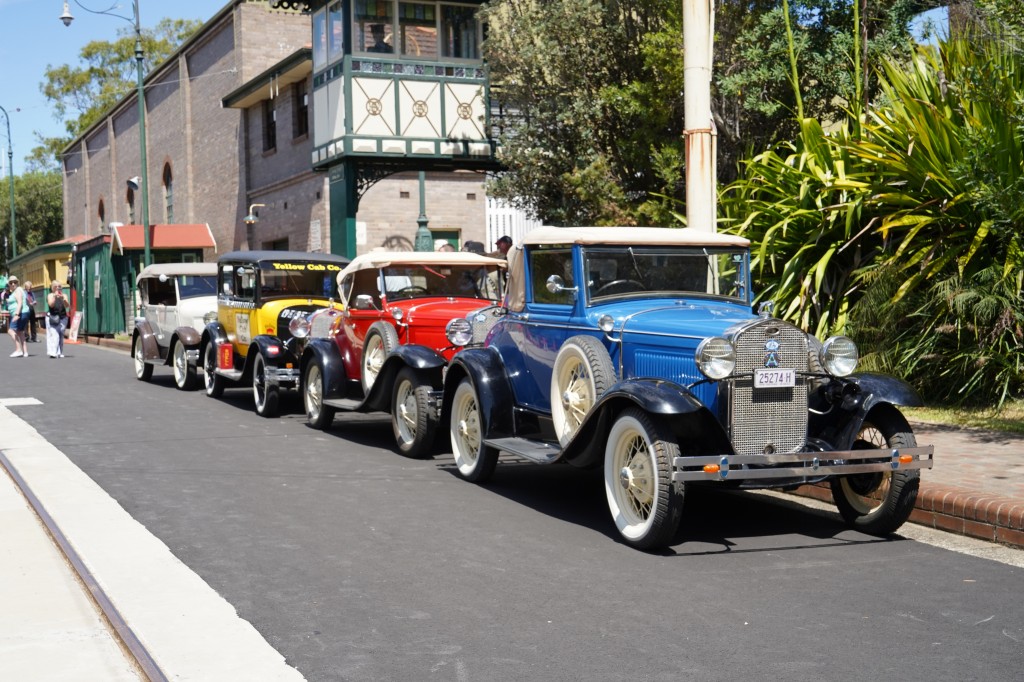
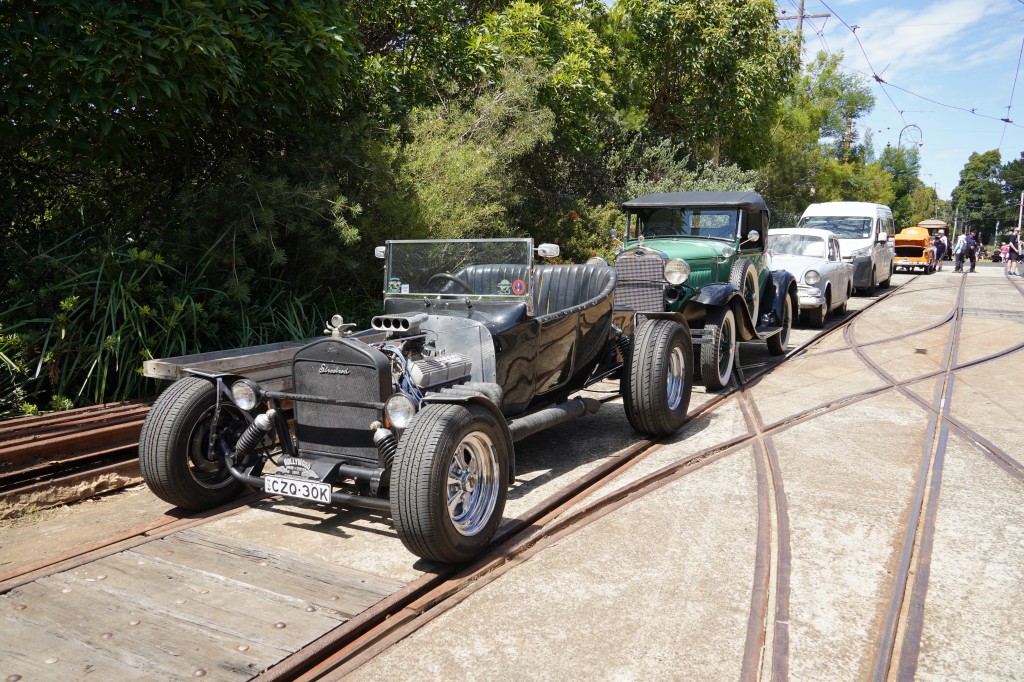
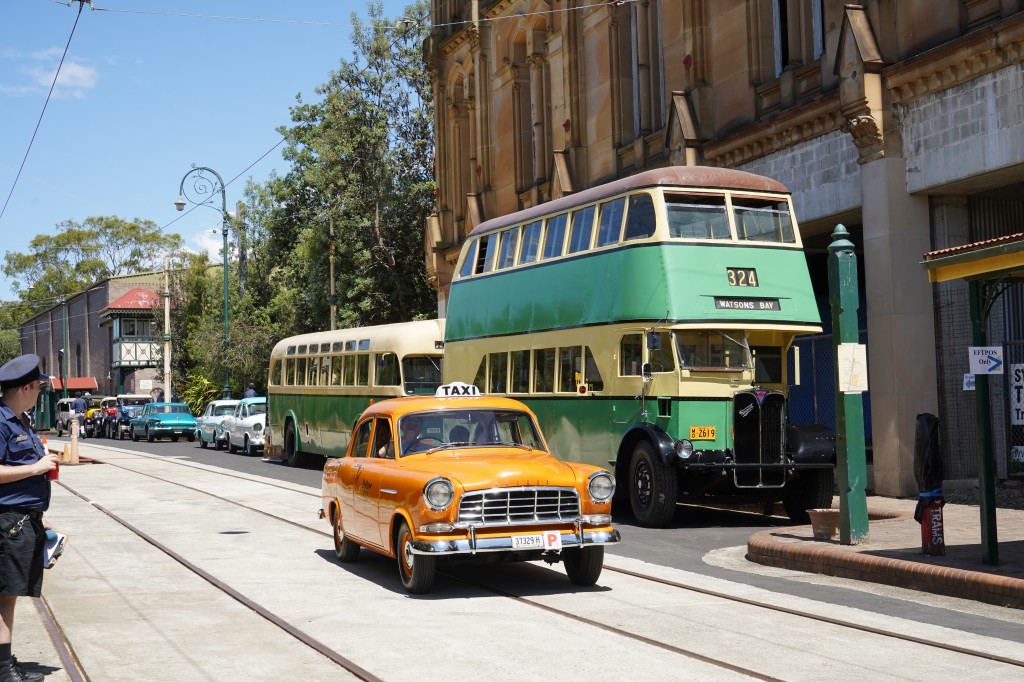
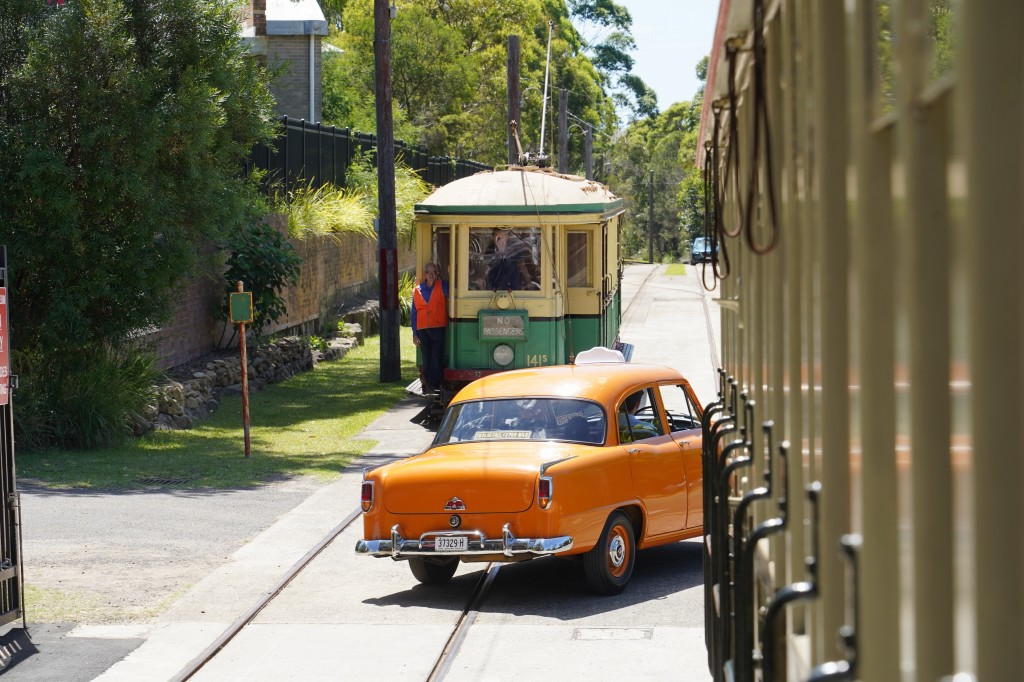
クラシックカーもたくさん展示されていました。クラシックカーのタクシーも走っており、バスやトラムとの相性も抜群です。
Many other classic cars were also on display. There is also a classic car taxi fleet, which is a perfect match for the buses and trams.
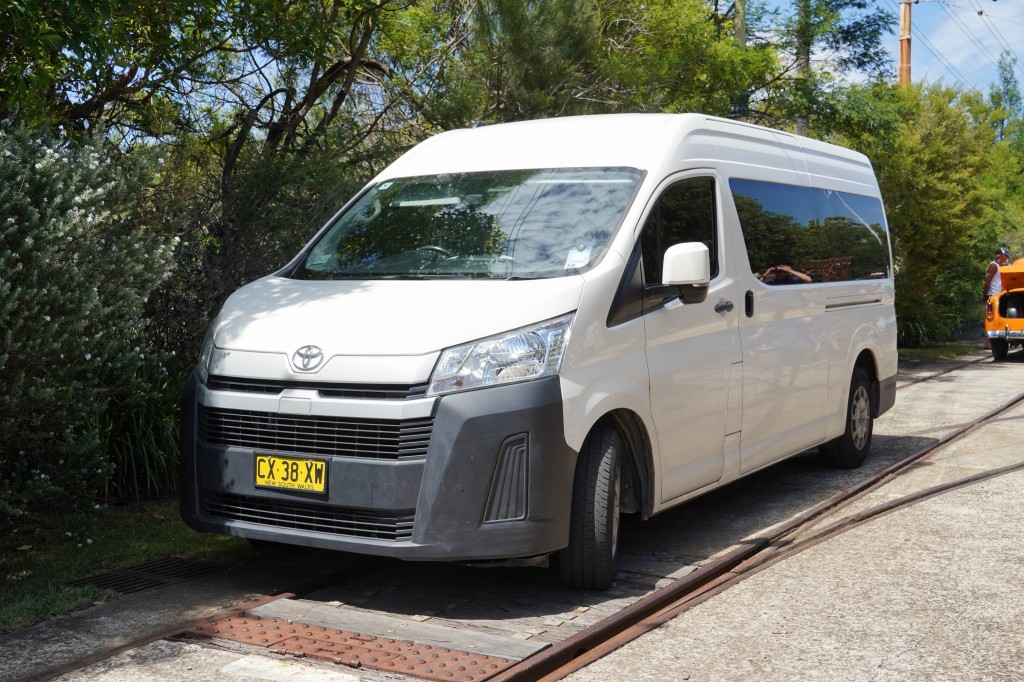
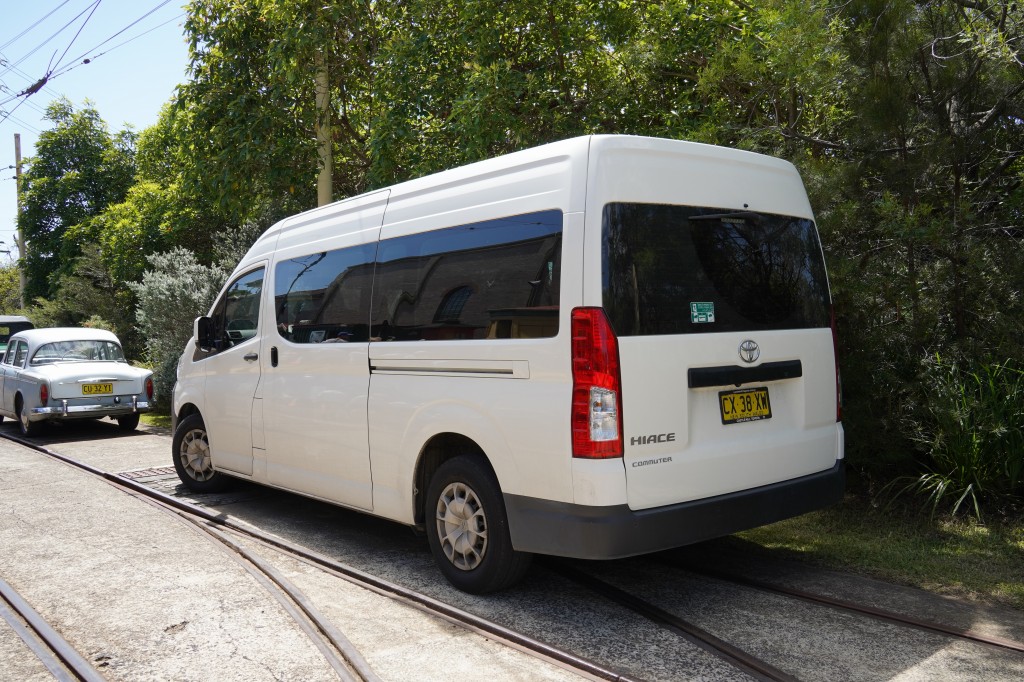
クラシックカーと並んでノアっぽい既視感のある車がいる・・・と思って見たらトヨタのハイエースでした。
なんか顔が日本と違くない?と思い調べてみると、2019年から発売の6代目H300系海外仕様車だそうです。
オーストラリアではバックドアが左右非対称の観音開き構造のオプション設定が存在するようです。
それってホンダステップワゴンのわくわくゲートでは!?(こちらは現在廃止)
I thought I saw a Noah-like car with a sense of deja vu alongside the classic cars and saw it was a Toyota HiAce.
Isn't the face somehow different from the Japanese one? When I looked it up, I found that it is the sixth generation H300 series overseas-specification car, which will be on sale from 2019.
In Australia, there seems to be an optional back door with an asymmetrical double-ended, double-ended, double-ended, double-ended, double-ended structure.
Isn't that the Honda Step Wagon's wakuwaku gate! (This one is now discontinued)
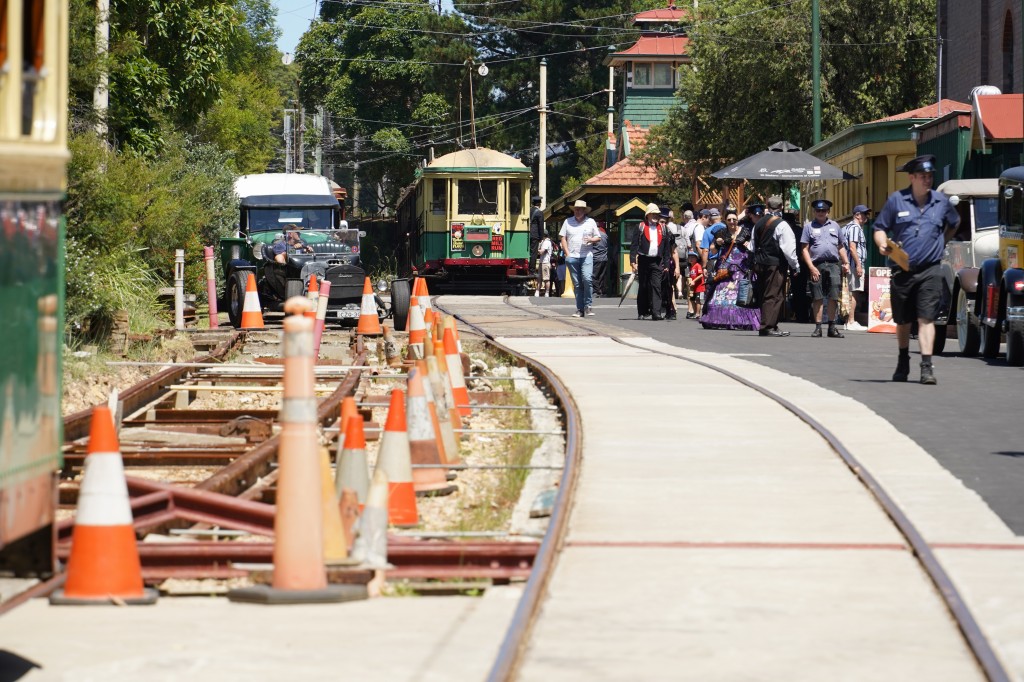
この日は博物館内でもトラックワークをしていました。
日本では運休を伴うトラックワークは非常に珍しいのですが、オーストラリアでは大抵どこかではトラックワークで電車が運休しています。
トラックワークの影響のためかはよくわかりませんが、この日はロフタス(博物館)を起点として、ロイヤルナショナルパークもしくはサザーランドの2系統が別々で運行していました。
通常はロフタス→サザーランド→ロフタス→ロイヤルナショナルパーク→ロフタスで一巡する運行が一般的なようです。
On this day, trackwork was also being carried out in the museum.
In Japan, trackwork with service suspensions is very rare, but in Australia, trains are usually suspended somewhere due to trackwork.
I am not sure if this was due to trackwork, but on this day there were two separate trains running from Loftus (museum) to either Royal National Park or Sutherland.
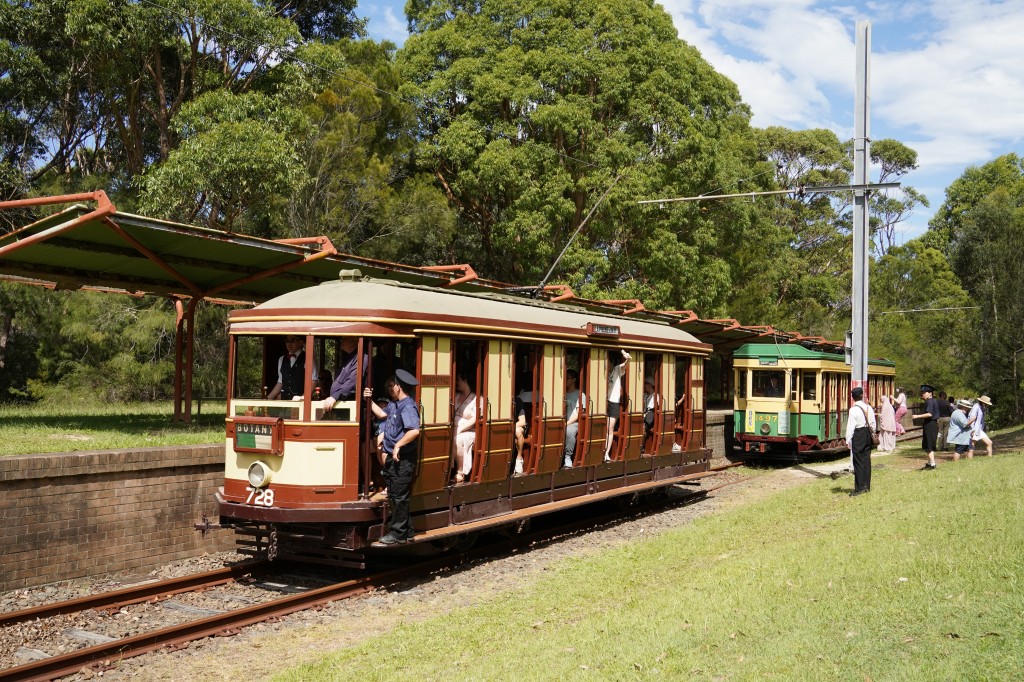
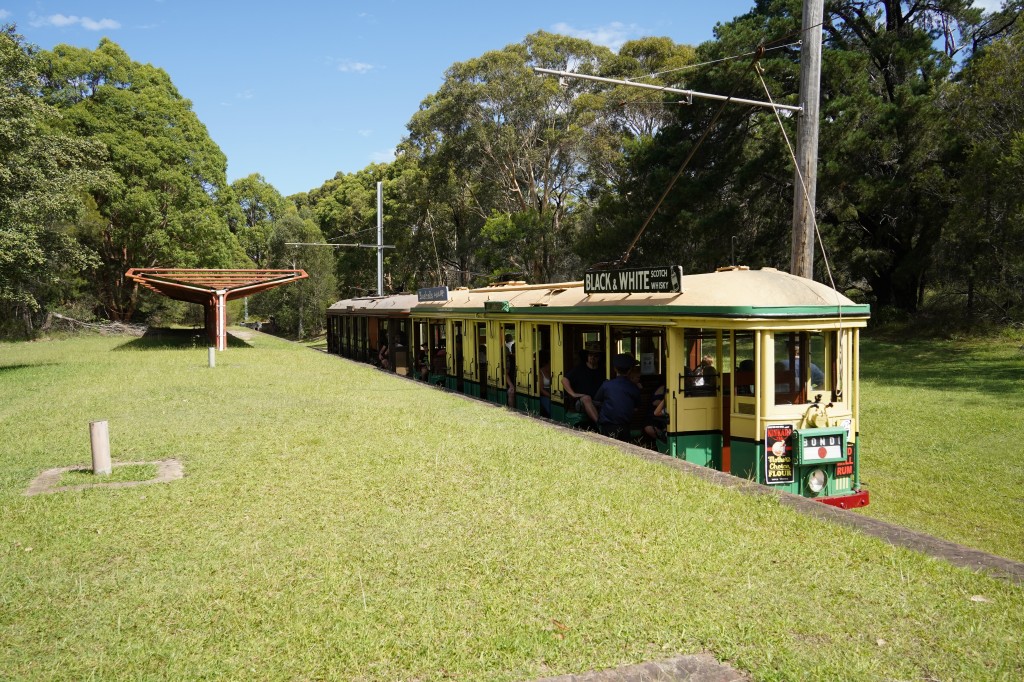
乗車体験でロイヤルナショナルパークに到着したビンテージトラムたち。
この線路はナショナルパーク線の廃線跡をそのまま活用しています。
プラットホームも普通の鉄道用の高さとなっているため、トラムの利用者が使用することはありません。
Vintage trams arrive at the Royal National Park for the ride experience.
The track is made from the disused National Park line.
The platforms are also at normal railway height and are not used by tram users.
ロフタスからロイヤルナショナルパークまでの4K前面展望映像です。
4K cab view from Loftus to Royal National Park.
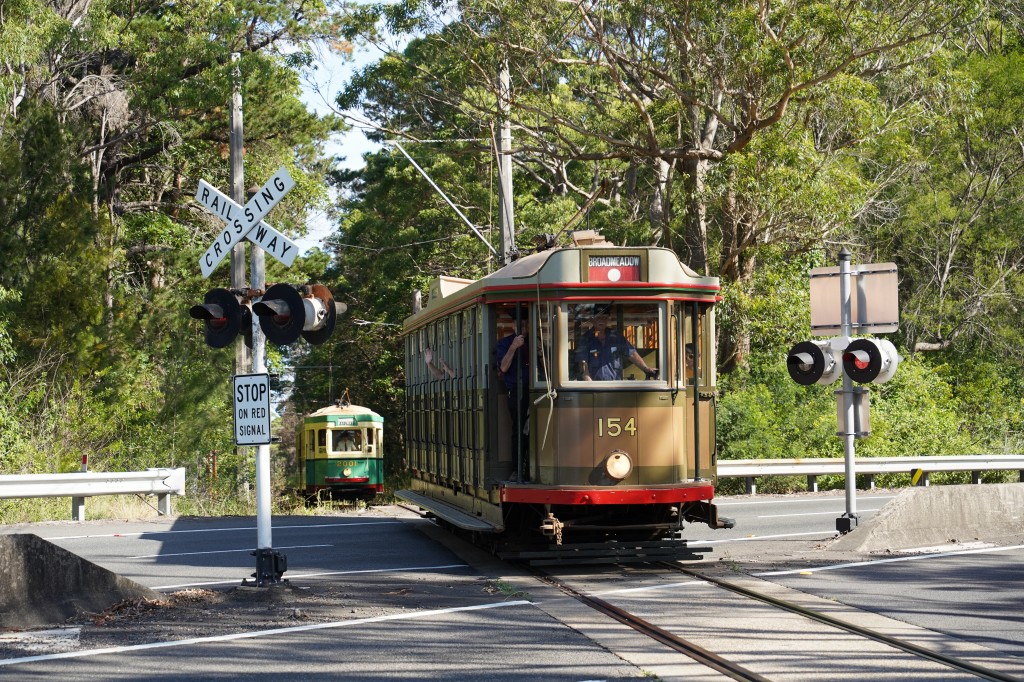
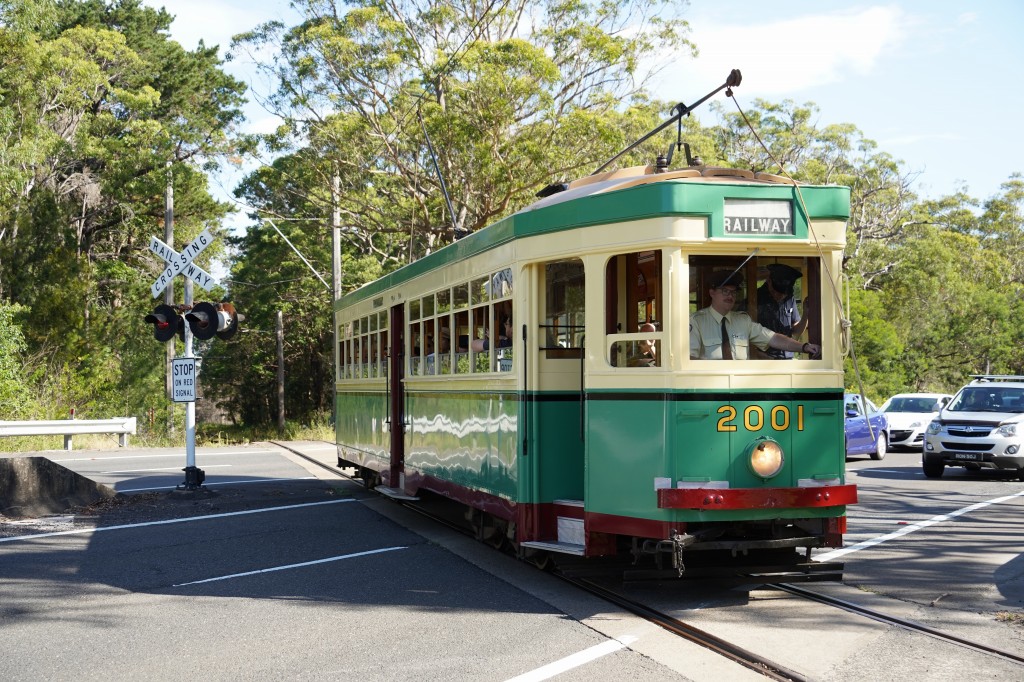
この日の最終列車がロイヤルナショナルパークを発車し、ロフタスに戻ってきました。
路線内で唯一の踏切を渡るL/P154号とR2001号。ここは幹線道路のため交通量が非常に多く、横断するトラムは必ず一旦停止をして踏切を作動されて通過します。
一度にたくさんのビンテージトラムを見ることができ、とても楽しい1日でした。
The last train of the day left Royal National Park and returned to Loftus.
L/P 154 and R2001 cross the only level crossing on the route. Traffic is very heavy here due to the main road, and the trams crossing always have to stop once to allow the level crossing to be activated and passed.
It was a very enjoyable day, seeing so many vintage trams at once.
---PR---
